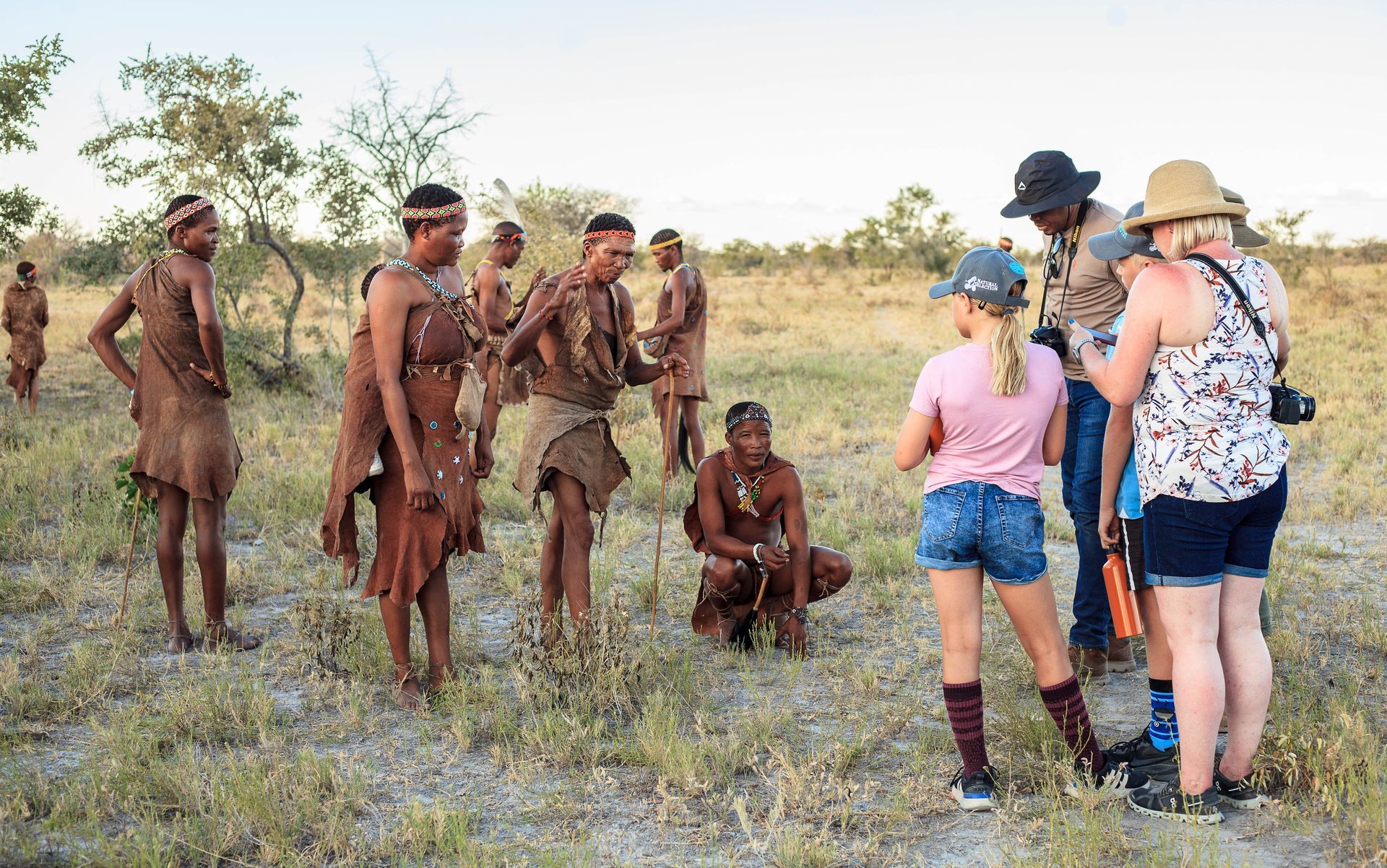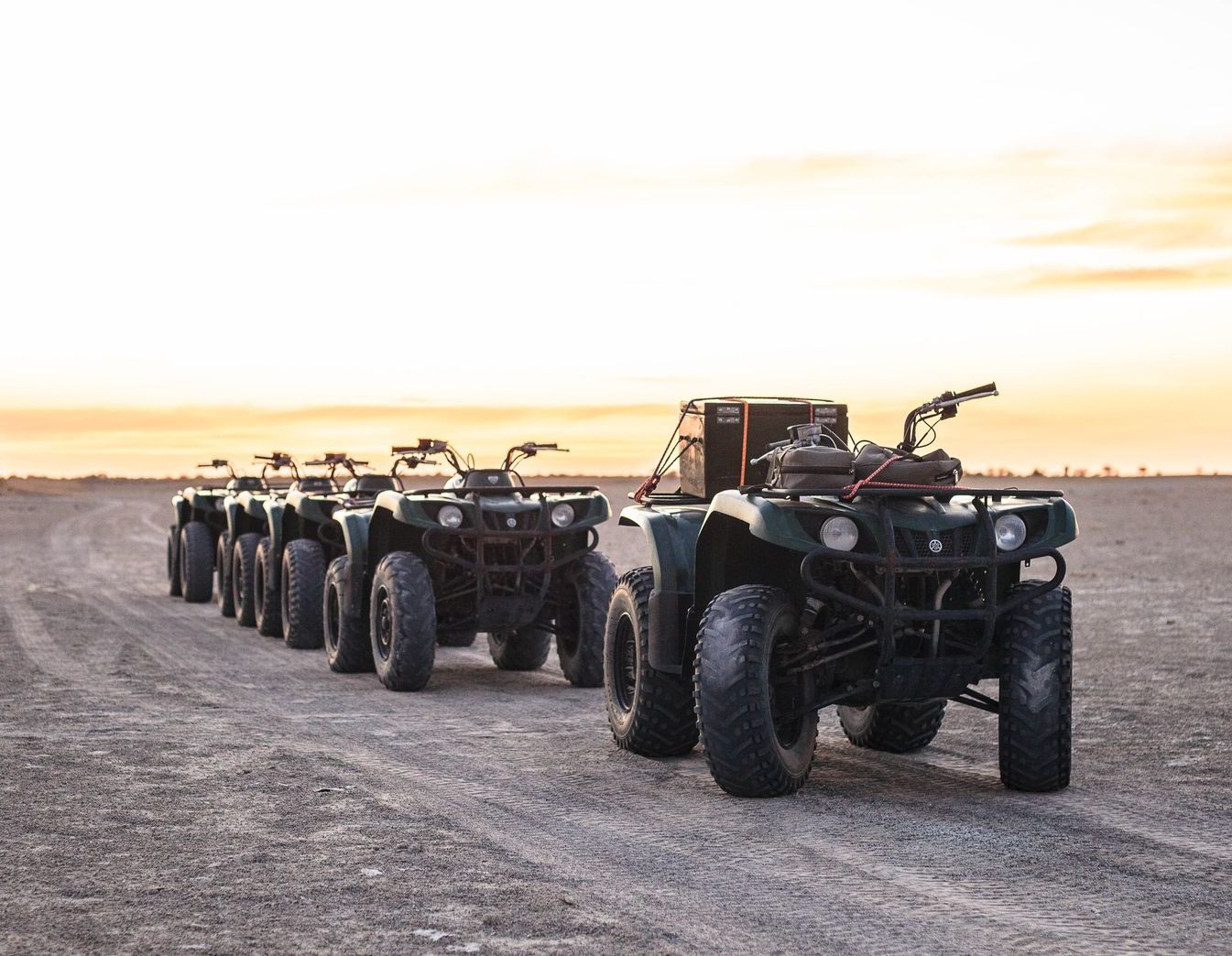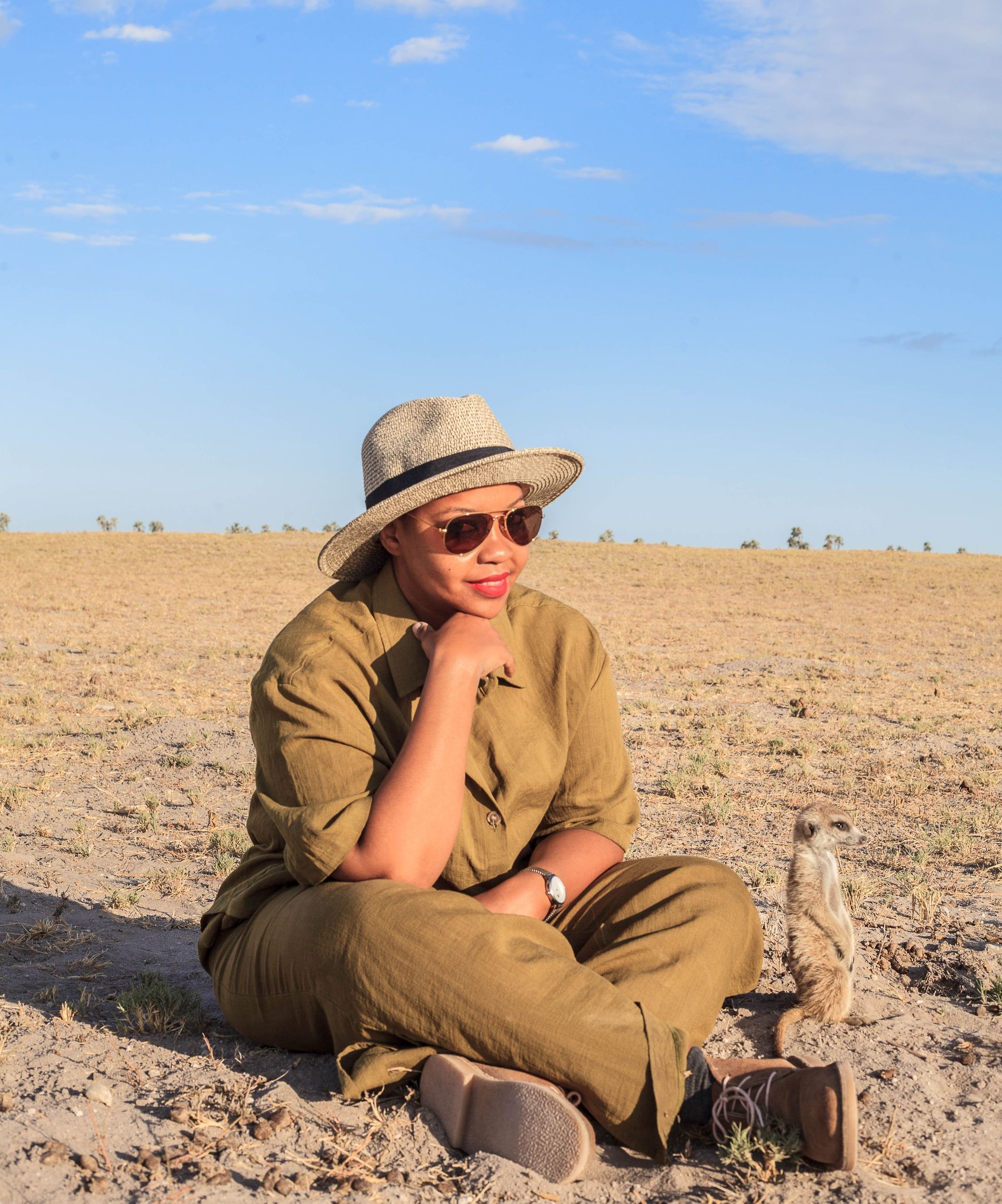Makgadikgadi
& Nxai Pan
Makgadikgadi
& Nxai Pan
Makgadikgadi
& Nxai Pan
Surreal landscapes and ancient history
Makgadikgadi Pans National Park lies south of Nxai Pan National Park, and together they form one of Botswana’s most otherworldly and evocative safari regions. This is the land of vast white horizons and silences so deep they echo. The salt pans themselves are among the largest in the world – stark, flat and seemingly lifeless during the dry months – yet this ancient landscape holds a surprising abundance of wildlife and history.
The name Makgadikgadi means ‘vast, lifeless land’, but to travellers who crave solitude, space and a powerful sense of place, these pans offer a different kind of richness. Even in peak season, you’re unlikely to cross paths with many others. The reward is total immersion in a landscape where the sky meets the earth in a shimmering, sun-bleached haze.
To the north, Nxai Pan National Park offers more variation – islands of acacia and mopane woodland punctuating the grass-covered fossil pans. Rain brings transformation. Dry emptiness gives way to movement, colour and life. Plains game gather in numbers. Lions patrol the pans. And birds – thousands of them – return to nest, feed and fill the silence with their calls.
This is a place of mood and contrast, of ancient trees and shifting light. Of zebra migrations, stargazing skies and the deep, old quiet of Botswana’s desert heart.
Why they stand out
The Makgadikgadi and Nxai Pans are shaped not only by seasonal change but by a timeline that stretches back to the origins of humanity. Scientific studies suggest this region was the ancestral homeland of modern humans, with the salt pans once forming the bed of a super lake that covered much of northern Botswana.
Today, the remains of that great lake lie exposed – vast, mineral-rich salt flats that create a surreal, almost lunar environment. In the dry months, the pans appear lifeless. But their power lies in the contrast. When the rains arrive, water pools across the crusted surface and life returns in abundance. Thousands of flamingos and pelicans descend to feed and breed. Plains game migrate in long, dust-kicked lines across the landscape. Predators follow.
Kubu Island rises from the whiteness like a monument. This rocky outcrop, sacred to local people and ringed by sculptural baobabs, is a place of spiritual and photographic resonance. Sunsets here are breathtaking. At night, the stars stretch unbroken from horizon to horizon.
The nearby Nata Bird Sanctuary, where the edge of Sowa Pan cradles seasonal waters, becomes one of the few places in Africa where flamingos reliably breed. For birders and photographers, it’s a highlight. For everyone else, it’s simply astonishing.
Why they stand out
The Makgadikgadi and Nxai Pans are shaped not only by seasonal change but by a timeline that stretches back to the origins of humanity. Scientific studies suggest this region was the ancestral homeland of modern humans, with the salt pans once forming the bed of a super lake that covered much of northern Botswana.
Today, the remains of that great lake lie exposed – vast, mineral-rich salt flats that create a surreal, almost lunar environment. In the dry months, the pans appear lifeless. But their power lies in the contrast. When the rains arrive, water pools across the crusted surface and life returns in abundance. Thousands of flamingos and pelicans descend to feed and breed. Plains game migrate in long, dust-kicked lines across the landscape. Predators follow.
Kubu Island rises from the whiteness like a monument. This rocky outcrop, sacred to local people and ringed by sculptural baobabs, is a place of spiritual and photographic resonance. Sunsets here are breathtaking. At night, the stars stretch unbroken from horizon to horizon.
The nearby Nata Bird Sanctuary, where the edge of Sowa Pan cradles seasonal waters, becomes one of the few places in Africa where flamingos reliably breed. For birders and photographers, it’s a highlight. For everyone else, it’s simply astonishing.
Why they stand out
The Makgadikgadi and Nxai Pans are shaped not only by seasonal change but by a timeline that stretches back to the origins of humanity. Scientific studies suggest this region was the ancestral homeland of modern humans, with the salt pans once forming the bed of a super lake that covered much of northern Botswana.
Today, the remains of that great lake lie exposed – vast, mineral-rich salt flats that create a surreal, almost lunar environment. In the dry months, the pans appear lifeless. But their power lies in the contrast. When the rains arrive, water pools across the crusted surface and life returns in abundance. Thousands of flamingos and pelicans descend to feed and breed. Plains game migrate in long, dust-kicked lines across the landscape. Predators follow.
Kubu Island rises from the whiteness like a monument. This rocky outcrop, sacred to local people and ringed by sculptural baobabs, is a place of spiritual and photographic resonance. Sunsets here are breathtaking. At night, the stars stretch unbroken from horizon to horizon.
The nearby Nata Bird Sanctuary, where the edge of Sowa Pan cradles seasonal waters, becomes one of the few places in Africa where flamingos reliably breed. For birders and photographers, it’s a highlight. For everyone else, it’s simply astonishing.
Some background
This is a region carved by ancient water, but also by culture and movement. The San people have called this landscape home for millennia. The word ‘Nxai’ itself comes from the San name for a curved digging stick – a nod to both the park’s shape and the traditional knowledge embedded in this land.
Every fossil pan, every island of woodland, every old track in the sand holds layers of story. From early explorers who camped beneath baobabs to modern conservationists working to protect migratory corridors, Makgadikgadi and Nxai have always attracted those drawn to the frontier.
What remains today is a safari experience like no other – a vast wilderness where history, space and solitude converge.
Some background
This is a region carved by ancient water, but also by culture and movement. The San people have called this landscape home for millennia. The word ‘Nxai’ itself comes from the San name for a curved digging stick – a nod to both the park’s shape and the traditional knowledge embedded in this land.
Every fossil pan, every island of woodland, every old track in the sand holds layers of story. From early explorers who camped beneath baobabs to modern conservationists working to protect migratory corridors, Makgadikgadi and Nxai have always attracted those drawn to the frontier.
What remains today is a safari experience like no other – a vast wilderness where history, space and solitude converge.
Some background
This is a region carved by ancient water, but also by culture and movement. The San people have called this landscape home for millennia. The word ‘Nxai’ itself comes from the San name for a curved digging stick – a nod to both the park’s shape and the traditional knowledge embedded in this land.
Every fossil pan, every island of woodland, every old track in the sand holds layers of story. From early explorers who camped beneath baobabs to modern conservationists working to protect migratory corridors, Makgadikgadi and Nxai have always attracted those drawn to the frontier.
What remains today is a safari experience like no other – a vast wilderness where history, space and solitude converge.
Makgadikgadi National Park
The Makgadikgadi region is defined by the dramatic emptiness of the great Nwetwe and Sowa Pans. During the long dry months, the pans stretch out in every direction, cracked and blinding white under the sun. At first glance, the landscape appears still – but look closer and you’ll notice the subtle signs of life, from lizards darting over the surface to the faint paths worn by foraging antelope.
When the summer rains arrive, the transformation is astonishing. Water collects in low-lying basins, grasses begin to grow, and the desert erupts in colour. The arrival of thousands of zebra and wildebeest signals the start of one of Africa’s most under-the-radar migrations. These herds move steadily across the pans in search of new grazing, followed closely by predators like lion, cheetah and hyena.
For photographers and adventurers alike, this is a landscape that stirs something primal. It’s not about the density of game, but the theatre of movement, light and scale.
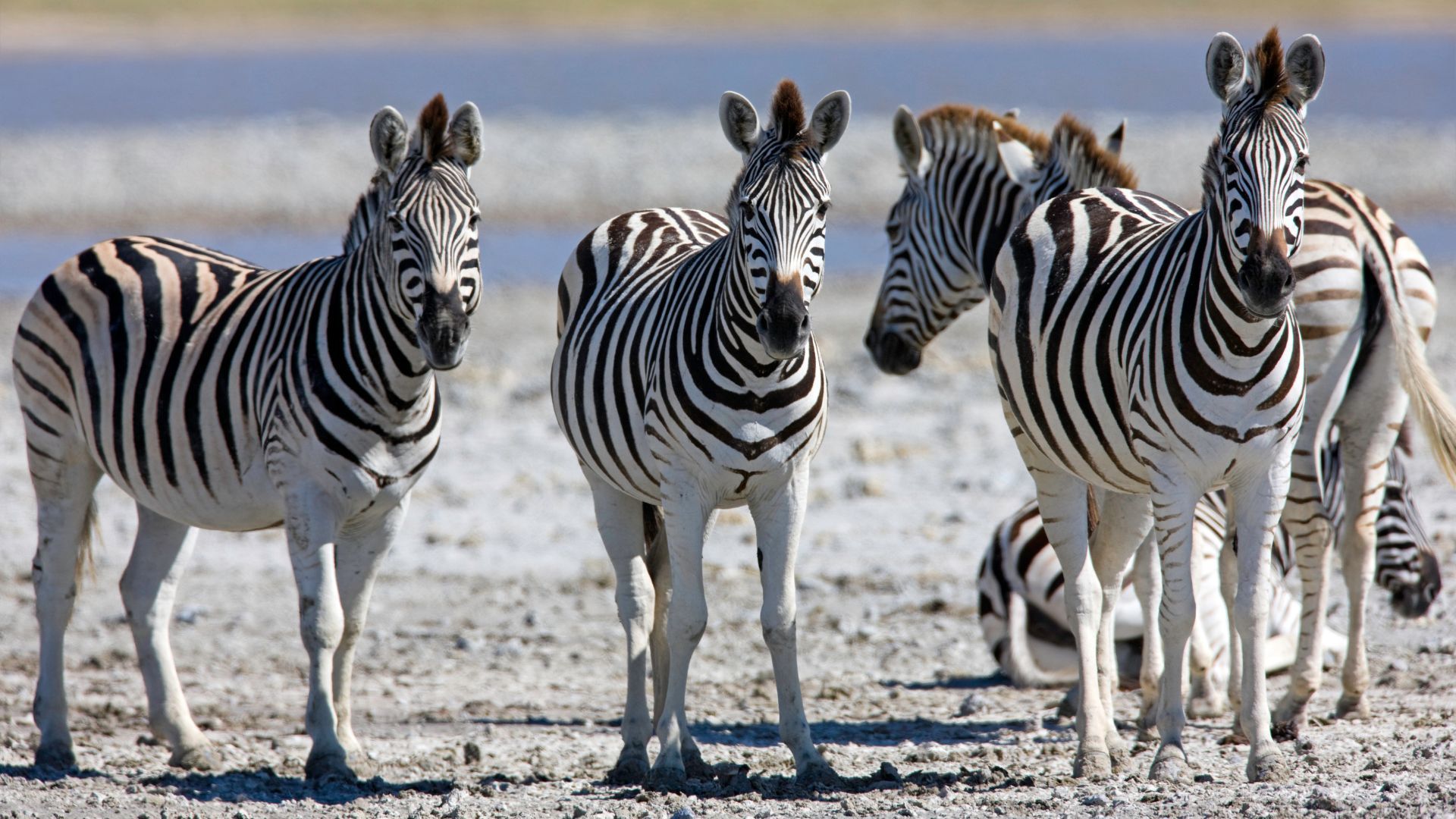
Makgadikgadi National Park
The Makgadikgadi region is defined by the dramatic emptiness of the great Nwetwe and Sowa Pans. During the long dry months, the pans stretch out in every direction, cracked and blinding white under the sun. At first glance, the landscape appears still – but look closer and you’ll notice the subtle signs of life, from lizards darting over the surface to the faint paths worn by foraging antelope.
When the summer rains arrive, the transformation is astonishing. Water collects in low-lying basins, grasses begin to grow, and the desert erupts in colour. The arrival of thousands of zebra and wildebeest signals the start of one of Africa’s most under-the-radar migrations. These herds move steadily across the pans in search of new grazing, followed closely by predators like lion, cheetah and hyena.
For photographers and adventurers alike, this is a landscape that stirs something primal. It’s not about the density of game, but the theatre of movement, light and scale.

Makgadikgadi National Park
The Makgadikgadi region is defined by the dramatic emptiness of the great Nwetwe and Sowa Pans. During the long dry months, the pans stretch out in every direction, cracked and blinding white under the sun. At first glance, the landscape appears still – but look closer and you’ll notice the subtle signs of life, from lizards darting over the surface to the faint paths worn by foraging antelope.
When the summer rains arrive, the transformation is astonishing. Water collects in low-lying basins, grasses begin to grow, and the desert erupts in colour. The arrival of thousands of zebra and wildebeest signals the start of one of Africa’s most under-the-radar migrations. These herds move steadily across the pans in search of new grazing, followed closely by predators like lion, cheetah and hyena.
For photographers and adventurers alike, this is a landscape that stirs something primal. It’s not about the density of game, but the theatre of movement, light and scale.

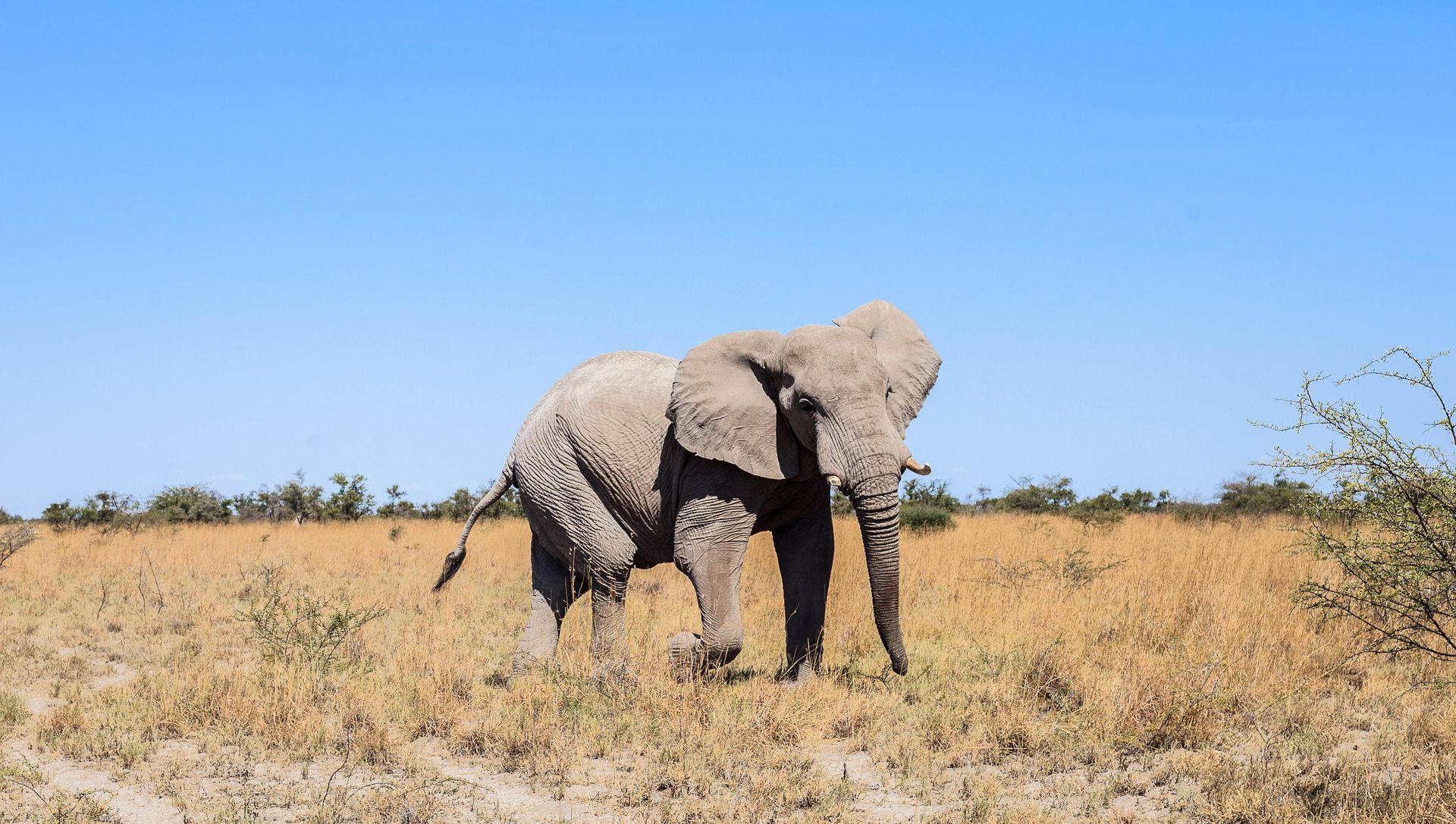
Nxai Pan
National Park
Nxai Pan offers a more intimate experience. Fossil pans covered in grass are dotted with umbrella acacias that provide welcome shade for springbok, giraffe and impala. The waterholes attract predators, and lions are frequently seen near the central pan. Cheetah, jackal, bat-eared fox and both spotted and brown hyena are also commonly recorded, with elephant and wild dog occasional but thrilling visitors.
Unlike other regions in Botswana, Nxai offers the rare opportunity to see springbok and impala side by side, sharing the same plains. The birdlife is equally rewarding, particularly during the green season when migratory species return in large numbers.
Just beyond the pan itself lies one of the region’s most iconic landmarks: Baines Baobabs. These massive, timeworn trees were immortalised in 1862 by British artist and explorer Thomas Baines, and they still stand exactly as he painted them. Set against the pale expanse of Kudiakam Pan, they form one of the most striking and spiritual sights in all of Botswana.

Nxai Pan
National Park
Nxai Pan offers a more intimate experience. Fossil pans covered in grass are dotted with umbrella acacias that provide welcome shade for springbok, giraffe and impala. The waterholes attract predators, and lions are frequently seen near the central pan. Cheetah, jackal, bat-eared fox and both spotted and brown hyena are also commonly recorded, with elephant and wild dog occasional but thrilling visitors.
Unlike other regions in Botswana, Nxai offers the rare opportunity to see springbok and impala side by side, sharing the same plains. The birdlife is equally rewarding, particularly during the green season when migratory species return in large numbers.
Just beyond the pan itself lies one of the region’s most iconic landmarks: Baines Baobabs. These massive, timeworn trees were immortalised in 1862 by British artist and explorer Thomas Baines, and they still stand exactly as he painted them. Set against the pale expanse of Kudiakam Pan, they form one of the most striking and spiritual sights in all of Botswana.

Nxai Pan
National Park
Nxai Pan offers a more intimate experience. Fossil pans covered in grass are dotted with umbrella acacias that provide welcome shade for springbok, giraffe and impala. The waterholes attract predators, and lions are frequently seen near the central pan. Cheetah, jackal, bat-eared fox and both spotted and brown hyena are also commonly recorded, with elephant and wild dog occasional but thrilling visitors.
Unlike other regions in Botswana, Nxai offers the rare opportunity to see springbok and impala side by side, sharing the same plains. The birdlife is equally rewarding, particularly during the green season when migratory species return in large numbers.
Just beyond the pan itself lies one of the region’s most iconic landmarks: Baines Baobabs. These massive, timeworn trees were immortalised in 1862 by British artist and explorer Thomas Baines, and they still stand exactly as he painted them. Set against the pale expanse of Kudiakam Pan, they form one of the most striking and spiritual sights in all of Botswana.
What kind of safari to expect
This is safari in its most elemental form – raw, open and immersive. Travellers can expect long horizons, solitude and the quiet thrill of tracking wildlife across wide, open country.
Game drives across the pans often mean hours without seeing another vehicle. There’s a sense of true freedom in the space, with sightings made all the more rewarding by their unpredictability. During the rainy season, the arrival of migratory herds gives the landscape a sense of purpose and movement. At other times, it’s the stillness itself that captivates.
Kubu Island is a highlight for many. Rising like a mirage from Sowa Pan, its giant baobabs and rich archaeological history make it an exceptional spot for photography and camping. Further west, lesser-known areas like Gabatsadi Island offer peaceful seclusion and panoramic desert views.
Chapman’s Baobab, near Gweta, once served as a resting point for early explorers and still stands as a testament to time, memory and movement in the wild.
What kind of safari to expect
This is safari in its most elemental form – raw, open and immersive. Travellers can expect long horizons, solitude and the quiet thrill of tracking wildlife across wide, open country.
Game drives across the pans often mean hours without seeing another vehicle. There’s a sense of true freedom in the space, with sightings made all the more rewarding by their unpredictability. During the rainy season, the arrival of migratory herds gives the landscape a sense of purpose and movement. At other times, it’s the stillness itself that captivates.
Kubu Island is a highlight for many. Rising like a mirage from Sowa Pan, its giant baobabs and rich archaeological history make it an exceptional spot for photography and camping. Further west, lesser-known areas like Gabatsadi Island offer peaceful seclusion and panoramic desert views.
Chapman’s Baobab, near Gweta, once served as a resting point for early explorers and still stands as a testament to time, memory and movement in the wild.
What kind of safari to expect
This is safari in its most elemental form – raw, open and immersive. Travellers can expect long horizons, solitude and the quiet thrill of tracking wildlife across wide, open country.
Game drives across the pans often mean hours without seeing another vehicle. There’s a sense of true freedom in the space, with sightings made all the more rewarding by their unpredictability. During the rainy season, the arrival of migratory herds gives the landscape a sense of purpose and movement. At other times, it’s the stillness itself that captivates.
Kubu Island is a highlight for many. Rising like a mirage from Sowa Pan, its giant baobabs and rich archaeological history make it an exceptional spot for photography and camping. Further west, lesser-known areas like Gabatsadi Island offer peaceful seclusion and panoramic desert views.
Chapman’s Baobab, near Gweta, once served as a resting point for early explorers and still stands as a testament to time, memory and movement in the wild.
Things to do and see
This is one of Botswana’s best regions for those who enjoy more than just traditional game viewing. Wildlife is certainly part of the experience, but so too are the dramatic landscapes, historic landmarks, and otherworldly sense of space.
Birdwatching is superb, especially from December to April when the pans flood and migrant species return. Flamingos, pelicans and storks dominate the skyline, while smaller birds such as coursers, sandgrouse and wheatears can be seen combing the flats.
For those seeking something more active, quad biking across the crusted pans offers a thrilling way to explore the vastness. Horse riding through the grasslands offers an unforgettable connection to the land. And when night falls, there are few places on Earth better suited to stargazing. The dry, clear air and total absence of light pollution make the Makgadikgadi a stargazer’s paradise.
This is the perfect place to disconnect and feel small beneath an infinite sky.
Things to do and see
This is one of Botswana’s best regions for those who enjoy more than just traditional game viewing. Wildlife is certainly part of the experience, but so too are the dramatic landscapes, historic landmarks, and otherworldly sense of space.
Birdwatching is superb, especially from December to April when the pans flood and migrant species return. Flamingos, pelicans and storks dominate the skyline, while smaller birds such as coursers, sandgrouse and wheatears can be seen combing the flats.
For those seeking something more active, quad biking across the crusted pans offers a thrilling way to explore the vastness. Horse riding through the grasslands offers an unforgettable connection to the land. And when night falls, there are few places on Earth better suited to stargazing. The dry, clear air and total absence of light pollution make the Makgadikgadi a stargazer’s paradise.
This is the perfect place to disconnect and feel small beneath an infinite sky.
Things to do and see
This is one of Botswana’s best regions for those who enjoy more than just traditional game viewing. Wildlife is certainly part of the experience, but so too are the dramatic landscapes, historic landmarks, and otherworldly sense of space.
Birdwatching is superb, especially from December to April when the pans flood and migrant species return. Flamingos, pelicans and storks dominate the skyline, while smaller birds such as coursers, sandgrouse and wheatears can be seen combing the flats.
For those seeking something more active, quad biking across the crusted pans offers a thrilling way to explore the vastness. Horse riding through the grasslands offers an unforgettable connection to the land. And when night falls, there are few places on Earth better suited to stargazing. The dry, clear air and total absence of light pollution make the Makgadikgadi a stargazer’s paradise.
This is the perfect place to disconnect and feel small beneath an infinite sky.
Why choose Makgadikgadi
and Nxai Pans
This is a safari destination like no other – shaped by deep time, wide skies and the ancient rhythms of migration. The salt pans may appear stark, but they’re filled with moments of unexpected beauty and life. The summer rains bring transformation, the baobabs hold centuries of story, and the sense of scale is humbling.
Whether you come for the migrating herds, the stillness, the birdlife, or the astonishing photography, the Makgadikgadi and Nxai Pans will leave a lasting imprint. This is where Botswana’s wild soul reveals itself in silence, distance and light.
Why choose Makgadikgadi
and Nxai Pans
This is a safari destination like no other – shaped by deep time, wide skies and the ancient rhythms of migration. The salt pans may appear stark, but they’re filled with moments of unexpected beauty and life. The summer rains bring transformation, the baobabs hold centuries of story, and the sense of scale is humbling.
Whether you come for the migrating herds, the stillness, the birdlife, or the astonishing photography, the Makgadikgadi and Nxai Pans will leave a lasting imprint. This is where Botswana’s wild soul reveals itself in silence, distance and light.
Why choose Makgadikgadi
and Nxai Pans
This is a safari destination like no other – shaped by deep time, wide skies and the ancient rhythms of migration. The salt pans may appear stark, but they’re filled with moments of unexpected beauty and life. The summer rains bring transformation, the baobabs hold centuries of story, and the sense of scale is humbling.
Whether you come for the migrating herds, the stillness, the birdlife, or the astonishing photography, the Makgadikgadi and Nxai Pans will leave a lasting imprint. This is where Botswana’s wild soul reveals itself in silence, distance and light.


